https://ift.tt/3m56Ghs An Introduction to Type-2 Fuzzy Sets Get comfortable with some of the basic concepts behind type-2 fuzzy sets and l...
An Introduction to Type-2 Fuzzy Sets
Get comfortable with some of the basic concepts behind type-2 fuzzy sets and logic

Introduction
In a previous post, we have seen how we use a fuzzy set of type-1 when we cannot determine the membership of an element as 0 or 1. We can extend this concept when the circumstances are so fuzzy that we have trouble deciding the membership grade as a number in [0, 1]. In these cases, type-2 fuzzy sets provide the necessary framework to formalize and work with this information.
This post will look at the basic concepts behind type-2 fuzzy sets. We will base this discussion on "Type-2 Fuzzy Sets made Simple" by Robert John and Jerry Mendel, possibly the best paper to learn about type-2 fuzzy sets and logic.
What is a type-2 fuzzy set?
We start this discussion by restating the motivation behind the fuzzy set theory. Let us suppose that today's temperature is 25 degrees Celcius, or 77 Ferenheight. Can we consider today a hot day? What does a precise thermometer reading tell us about the day, and how should we regulate our behaviour based on this reading?
The US National Oceanic and Atmospheric Administration (NOAA) considers the range between 26 and 32 degrees as 'caution' and identifies ranges further up the temperature scale as 'dangerous' and 'extremely dangerous.' If we adhere to this definition, we can imagine the bounds of a hot day drawn by NOAA. Therefore, we can conclude that today will not fall in the category of 'hot' days, maybe in the 'warm' or 'slightly hot' one.
Categorizing a day using this logic will mean that a temperature of anything less than 26 and more than 32 degrees will not make the day 'hot'.
If we view the concept of a 'hot' day from a fuzzy lens, our reasoning will change. We can arguably consider 20 degrees a bit 'hot', while 30 degrees as positively 'hot'. On the other hand, we can classify forty degrees as a temperature beyond 'hot'; maybe it can fall under the 'torrid' category. Viewing 'hot' as a fuzzy concept will transform the rigid boundary into a curve that defines different grades of belonging for every temperature in the various categories. Thus a temperature can be 'warm'. 'hot' and 'torrid' simultaneously, albeit to different degrees in each category.
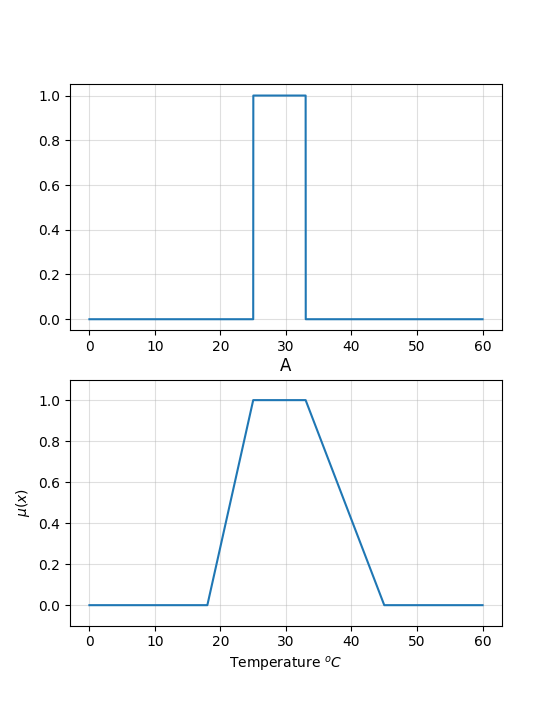
Let's now ask two different persons to plot their perception of the fuzzy set 'hot' and constrain them to use a trapezoidal set for their description, almost certainly. We will get two slightly different definitions. We will see that the degree of belonging that a given temperature has to the set 'hot' will be progressively smudged as we ask more people to submit their definition, and every point describing a degree of belonging will, in turn, transform into a fuzzy set in a three-dimensional function. The result is a fuzzy set of type-2.
Type-2 fuzzy logic is therefore motivated by the premise that concepts have different meanings to different people.
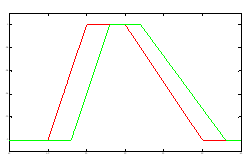
A type-2 fuzzy set for defining the concept of 'hot' temperature that we will denote by A, can be as depicted below:
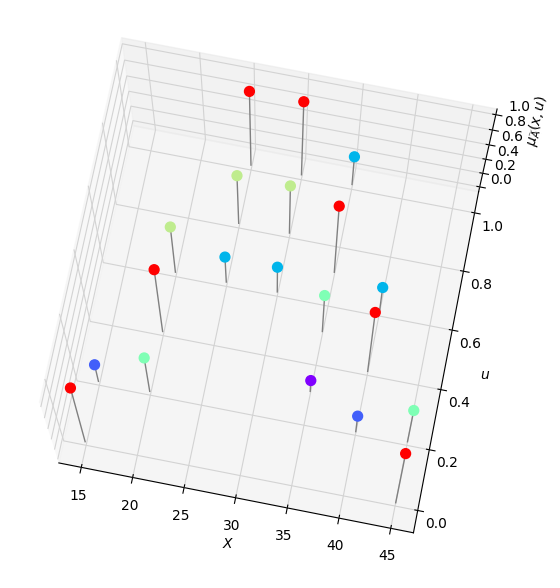
Type-2 fuzzy sets
The membership function of a Type-2 Fuzzy Set is three dimensional, with the
- x-axis called the primary variable
- the y-axis is called the secondary variable or secondary domain denoted by $u$. We note that this axis represents the degree of belonging in type-1 sets and therefore ranges in [0,1]. However, we have a range of degree of belonging values for every primary variable value in this case.
- the z-axis is called the membership function value (secondary grade) that is denoted by
The most straightforward way to define a type-2 fuzzy set is to consider the collection of all the points in the three-dimensional space that make up a set. Formally, therefore, a type-2 set can also be expressed as:
where the double integration sign signifies the union over admissible x and u for a continuous universe of discourse (for discrete universes of discourse use double summation symbols instead),
We can therefore describe the type-2 set shown above as follows:
(1 / 0 + 0.3 / 0.2)/15 +
(0.6 / 0.2 + 1 / 0.4 +0.7 / 0.6 )/20 +
(0.4 / 0.6 + 0.7 / 0.8 +1 / 1 )/25 +
(0.4 / 0.6 + 0.7 / 0.8 + 1 / 1 ) /30 +
(0.2 / 0.3 + 0.6 / 0.5 + 1 / 0.7 +0.4 / 1 ) / 35 +
(0.3 / 0.2 + 1 / 0.4 + 0.4 / 0.6 ) /40 +
(1 / 0 + 0.6 / 0.2 ) / 45
Furthermore,
is known as the primary membership and will be discussed in more detail in the next section.
Vertical Slices
If we isolate a primary variable value, we notice that we obtain a type-1 fuzzy set called a vertical slice.
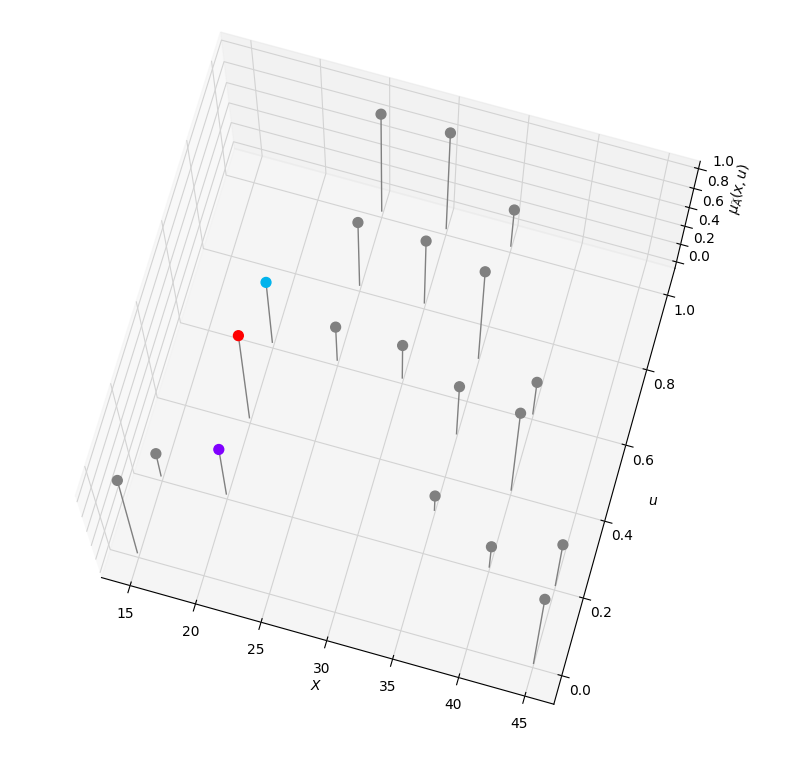
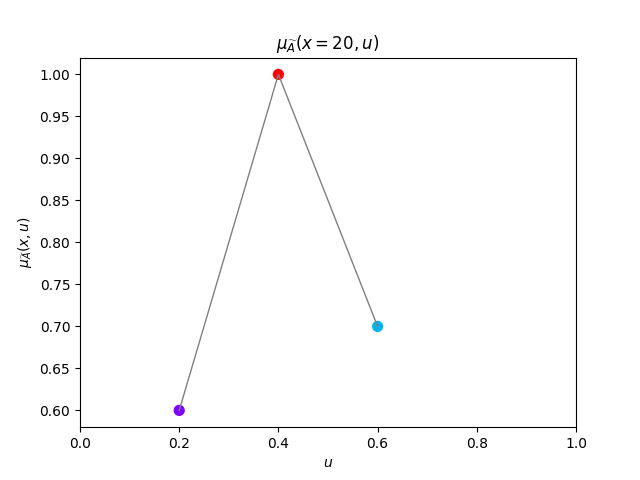
A vertical slice is, therefore, a Type-1 fuzzy set;
that formally defined as:
The function resulting from a vertical slice is also referred to as a secondary membership function, written formally as
that is
The secondary membership function at x=20 is, therefore:
0.6 / 0.2 + 1 / 0.4 +0.7 / 0.6
The domain of a secondary membership function is called the primary membership of x. Hence in the above equation
is the primary membership function
J_{20}= {.2, 0.4, 0.6}
The amplitude of a secondary membership function is the secondary grade. Hence in the above equation, f(u) is the secondary grade.
If X and J are discrete:
Regarding secondary grades, we can note that in
is a secondary grade.
Embedded Type-2 Sets
An embedded type-2 set can be created for discrete X and U by taking a single element out of each secondary membership function in a set. Hence, if X has N elements, our type-2 set has exactly one element from
namely
each with associated grade
such that:
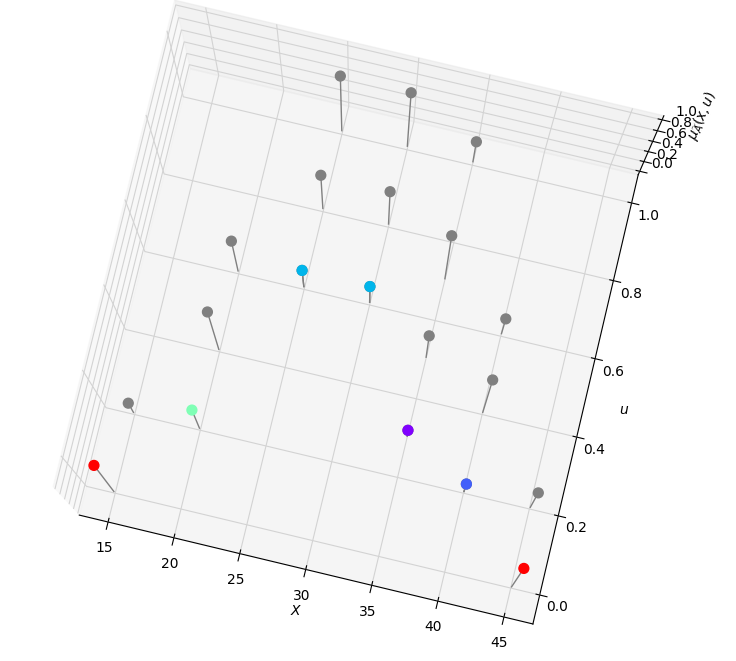
There are a total of
embedded sets in a type-2 fuzzy set
The identified embedded type-2 fuzzy set is therefore:
1 / 0 / 15 + 0.6 / 0.2 / 20 + 0.4 / 0.6 / 25 + 0.4 / 0.6 /30 + 0.2 /
We also notice that our set contains 2 x 3 x 3 x 3 x 4 x 3 x 2 = 1296 , embedded type-2 sets.
We can also then represent a type-2 fuzzy set by the collection of all the embedded type-2 sets, known as the wavy-slice representation or the Mendel-John representation. The wavy-slice representation is, therefore:
Type-1 fuzzy sets
A type-1 fuzzy set can be represented as a type-2 fuzzy set. Its type-2 representation is:
The value of 1 means that the secondary membership function has only one value in its domain, i.e. the primary membership at which the secondary grade is equal to 1.
Footprint of Uncertainty
The 2D support of a type-2 set is called the footprint of uncertainty (FOU)
FOU represents the uncertainty in the primary memberships of $\tilde{A}$. It is the union of all primary memberships.
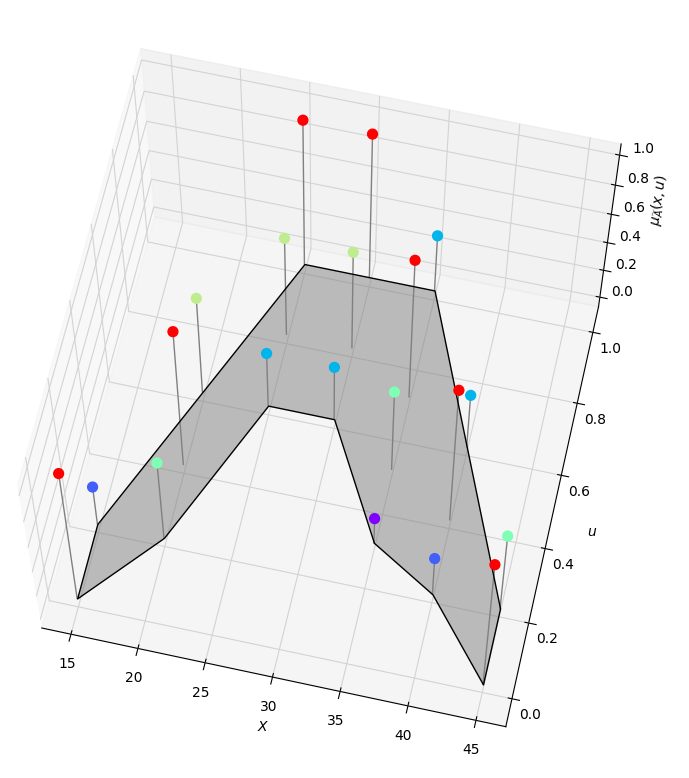
The shaded FOU implies a distribution at the top of the type-2 fuzzy set in the third dimension that depends on the choice of the secondary grades. When all the secondary grades are of a type-2 set are equal to 1, the set is called an interval type-2 fuzzy set.
We notice that the footprint of uncertainty has upper and lower bound, referred to as the upper and lower membership functions:
The lower membership function
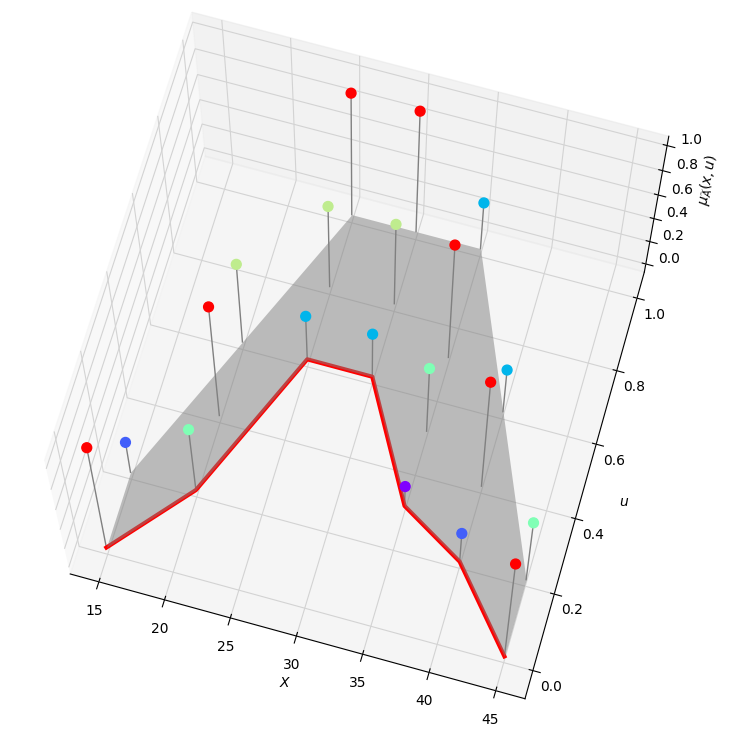
The upper membership function
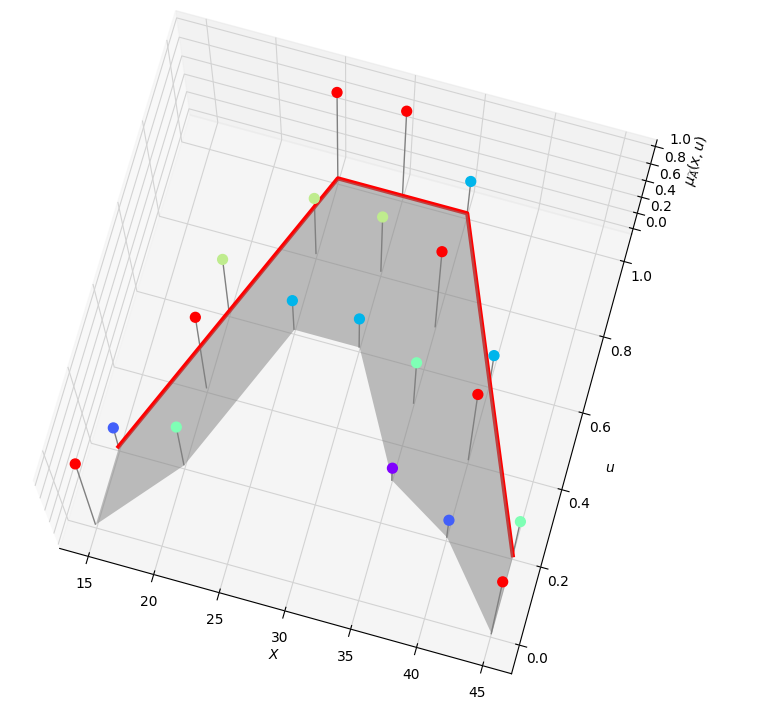
Conclusion
In this post, we discussed type-2 fuzzy sets as a more sophisticated structure where we can explain fuzziness that cannot be explained using type-1 sets. We have also looked into the basic principles that make up type-2 sets, the footprint of uncertainty and embedded sets. In future posts, we will discuss how type-1 logic can be extended to type-2 sets.
Type-2 Fuzzy Sets was originally published in Towards Data Science on Medium, where people are continuing the conversation by highlighting and responding to this story.
from Towards Data Science - Medium https://ift.tt/3juAt1E
via RiYo Analytics

No comments